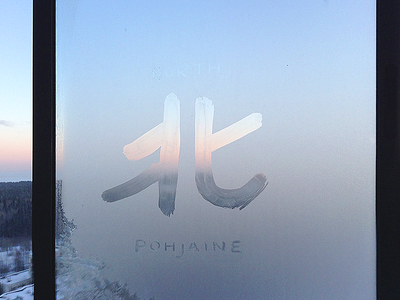6
-28°C outside. The nature's way to remind us in Karelia that we live in the North.
This winter we rarely see the sun, but when it appears once a month it gives us a horizon of unbelievable beauty. Sun sets here at 3 pm on winter, so I went to my loggia to catch last glimpses and scratch some ice off the window.
Yesterday i promised you to tell about Japanese readings. Let's go. There are two of most commonly used readings: On'yomi, based on Chinese pronunciation and Kun'yomi — native Japanese reading.
The most weird thing with learning Japanese is to find out when to use which reading. Some Kanji have On and Kun, some have only On or Kun, some have multiple Ons and another have multiple Kuns.
I learned that for you and here's the set of rules briefly.
Kun'youmi mostly used for:
1. Kokuji (Kanji made in Japan),
2. Names, both of people and places
3. Kanji followed by Okurigana (hiragana characters that are part of the word).
In other cases use On'yomi.
This is the most common scenario, but there are numerous exceptions, so it will be hard for beginners. Always see context. They even have two names for Japan — Nihon and Nippon, both are On'yomi's, and it's impossible to explain whats the difference.
There are also mixed readings and special readings but they are for self learning. If you already fell in love with Japanese go there if you speak Russian, and there if you're English.
Hyvittelen teidy Rastavanke! Toivotah teile hyvia mieldy ijakse!
